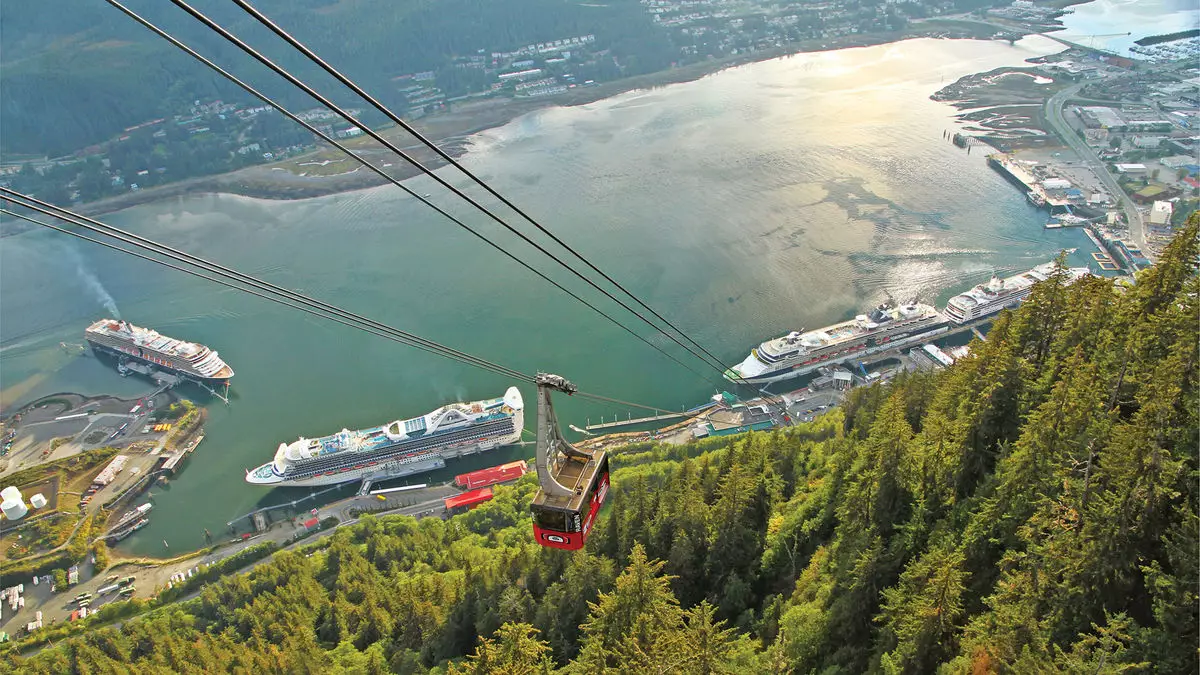Alaska’s cruise tourism sector is navigating a complex terrain, characterized by diverging sentiments among different communities. On one end of the spectrum, certain ports exhibit hesitance towards the influx of cruise ships, citing concerns from local populations and environmental sustainability. Conversely, others embrace this economic opportunity fervently, showcasing a fundamental divide in how various regions perceive the impact of cruise tourism.
At the heart of this discussion is the perspective of Russell Dick, CEO of Huna Totem Corp., who embodies the pro-cruise sentiment prevalent in some Alaskan communities. Dick expressed frustration upon hearing reports that the cruise industry might reduce services or withdraw vessels from Alaska amidst local pushback. He argues that not all voices in Southeast Alaska are aligned against cruise traffic; instead, many communities stand to benefit significantly from the economic opportunities that cruising brings. With a history of development that began with the establishment of Icy Strait Point—an expansive and nature-immersed port—Huna Totem represents a willingness to invest in infrastructure that caters to cruise tourism, striving to attract vendors and visitors who seek wilderness experiences over urban environments.
In stark contrast, other areas, notably Juneau, are grappling with the reality of over-tourism and its consequences. This has led to a critical examination of how cruise traffic can be managed moving forward. As Huna Totem rolls out projects like additional berthing facilities and terminals in strategic locations, the narrative shifts back to how the cruise lines can diversify their itineraries to distribute tourism more evenly across the state.
Robert Morgenstern from Carnival Corp. offers insight into the logistics behind cruising in Alaska. He emphasizes that while he understands the limitations imposed by Juneau’s capacity constraints, the industry must pivot towards alternative destinations. With the increased traffic anticipated, it is essential to develop attractive, varied itineraries that feature a blend of lesser-known ports along with the more recognized stops. He acknowledges that this may not only distribute the economic benefits of tourism but also enrich the travel experience for guests, providing them with opportunities to explore regions that embody the natural beauty and cultural diversity of Alaska beyond the well-trodden paths of Juneau and Ketchikan.
Communicating the value of these alternative destinations is a pressing task for cruise operators and local tourism boards alike. This, however, will necessitate a shift in marketing strategies that cater not only to the scenic allure of Alaska but also highlight activities that resonate with potential visitors.
The value of cruise tourism is particularly pronounced in communities wrestling with economic challenges. As Robert Morgenstern noted, traditional industries like timber and fishing are faltering, making tourism a beacon of hope for sustainable economic development. Promising ports such as Prince Rupert in British Columbia and Wrangell in Alaska are prime candidates for enhanced cruise itineraries, offering local economies a much-needed financial infusion.
Moreover, the current crisis of economic revival highlights the capacity of regions like South Central Alaska to accommodate increased cruise traffic. Julie Saupe, CEO of Visit Anchorage, offers a perspective that emphasizes the scale of Anchorage—a sizeable city that can absorb the impact of cruise tourism without succumbing to the challenges faced by smaller towns.
Ultimately, the growth trajectory of Alaska’s cruise tourism sector rests on a precarious balance: harnessing economic benefits while addressing community concerns over sustainability and local way of life. The dialogues surrounding these topics are essential as industry leaders explore ways to cultivate a more balanced tourism ecosystem.
Alaska’s cruise tourism is at a crossroads, delving into a conversation that invites broader questions of community engagement, sustainable practices, and economic resilience. The decisions made today will undoubtedly shape the landscape of Alaska’s tourism for generations to come.

